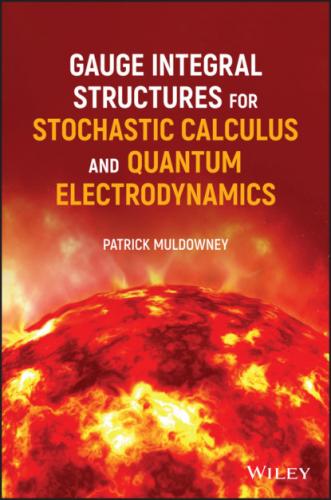5 6 In the terminology of [MTRV] and this book, Feynman's method consists of substituting cylinder function approximations in the action functional.
6 7 This simplification represents each of the variables , , and as one‐dimensional. The electric field component is essentially vectorial, and one‐dimensional is contrary to the physical nature of the system. A physically more accurate version can be arrived at by a careful reading of chapter 9 of [FH]. And even though it is a bit more complicated, it is not too difficult to adapt the mathematical theory presented in this book.
7 8 A Cauchy sum has . But allowing to be either of or makes a connection with the Riemann sums of ‐complete integration.
8 9 Theorem 63 (page 175 of [MTRV]) is false. See Section 11.2 below; and also [ website ].
Chapter 1 Stochastic Integration
The idea or purpose of stochastic integration is to define a random variable
where
are stochastic processes and
The integrand
If
The most important kind of stochastic integral is where
I1 Suppose the integrand is a step function, with constant random variable value for , . Then defineIn this case (that is, a step function), the Itô isometry holds for expected values:
I2 Suppose the process (not necessarily a step function) satisfiesThen there exists a sequence of step functions (processes) , such that
I3 For such , define its stochastic integral with respect to the process as
I4 If is Brownian motion the latter limit exists.
An objective of this book is to provide an alternative to the classical theory, not develop it. Thus the commentary, interpretation, and speculation of this section can be safely omitted by anybody who is either already familiar with, or is not interested in, the standard theory of stochastic integration.
Regarding notation, many textbooks use the symbol B for Brownian motion, whereas
In classical probability theory, an underlying mathematical probability measure space
